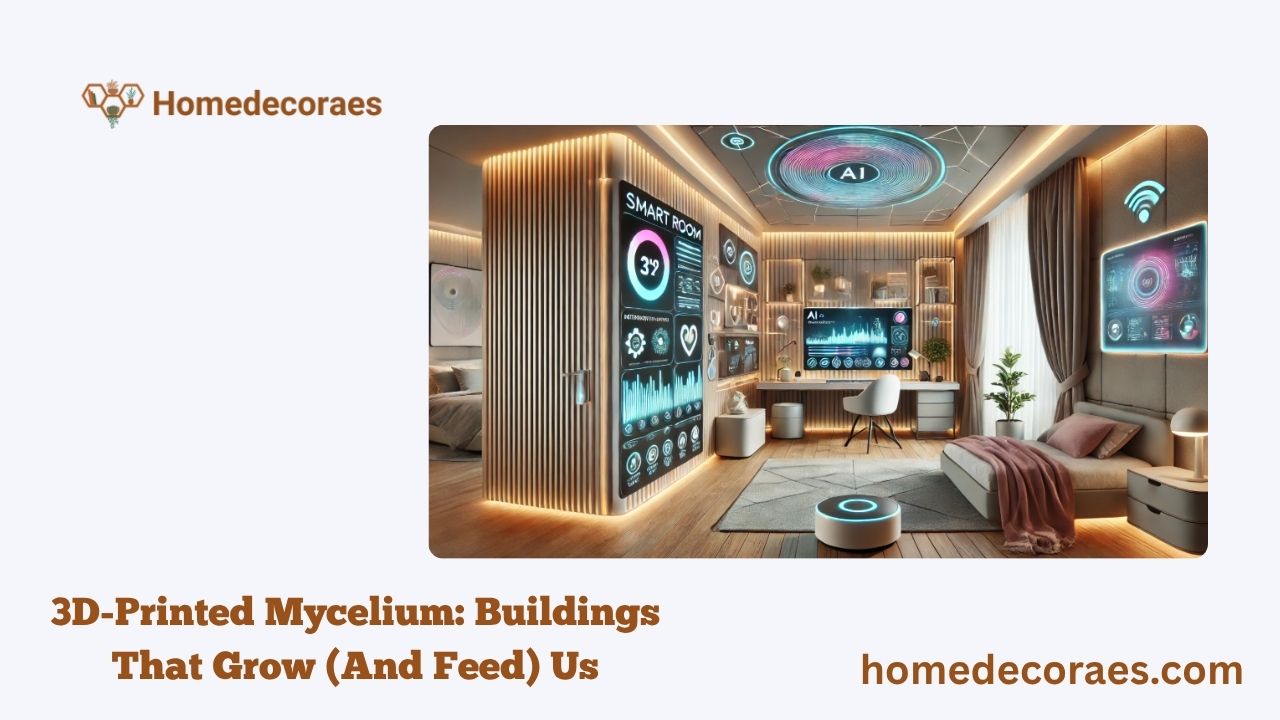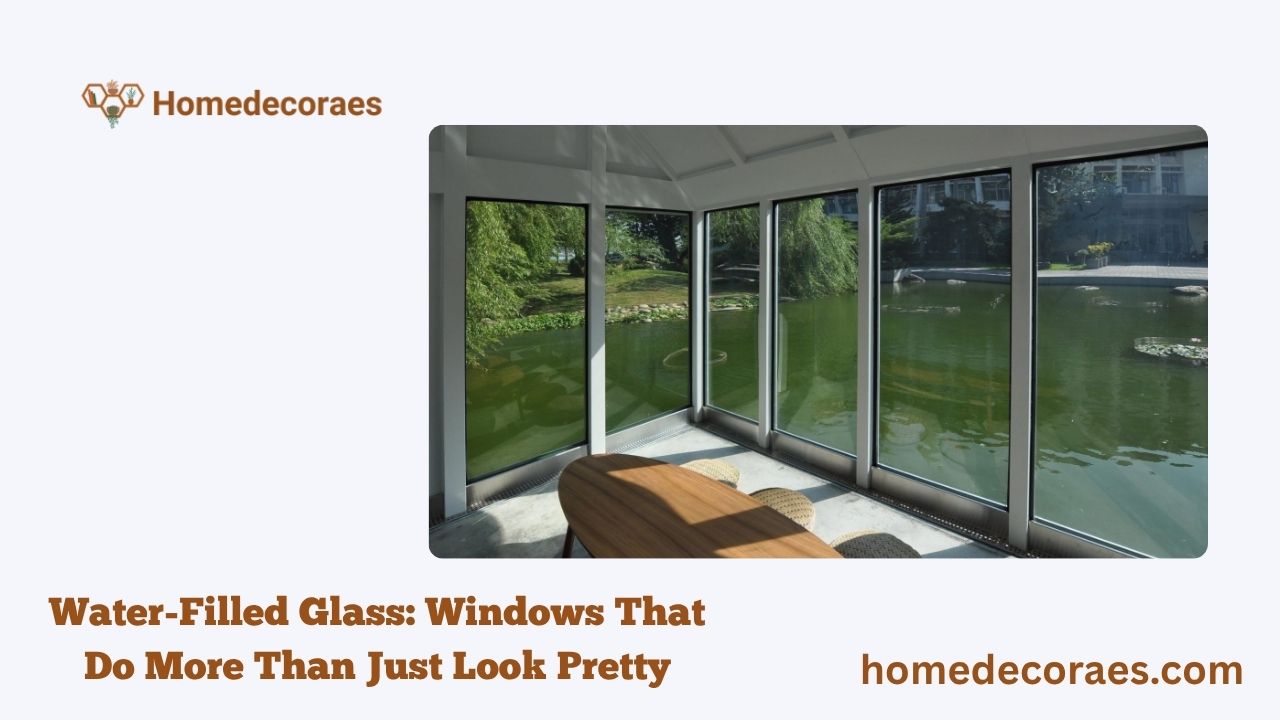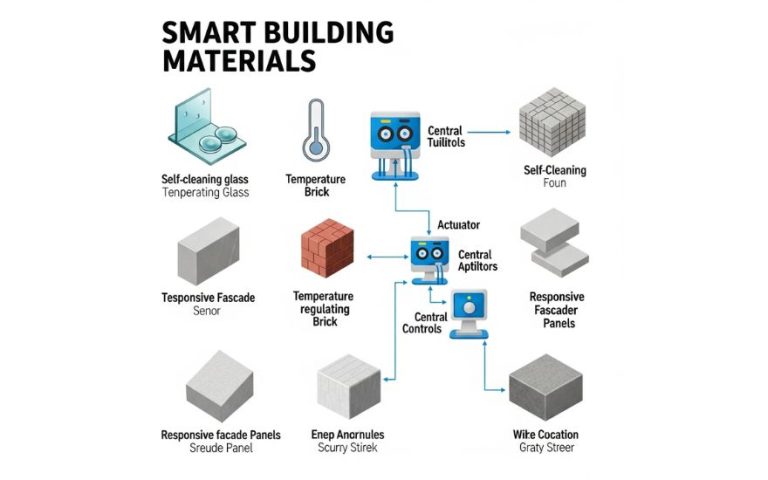Let’s face it.
The buildings we live and work in aren’t just static walls and roofs anymore. They’re evolving into living, breathing entities. Thanks to new innovations in smart building materials, we’re seeing a future where our structures can help the planet, not harm it.
From cutting-edge bioplastics made from agricultural waste to buildings that can literally grow themselves, innovation is reshaping construction. These aren’t just cool ideas—they’re game changers for sustainability, efficiency, and even aesthetics.
Let’s dive into this fascinating world of innovative construction materials. I’ll take you through some of the latest trends, creative solutions, and examples that are turning heads in 2025.
Biochar-Based Bioplastics: Turning Waste Into Carbon Gold

Imagine a cladding material that doesn’t just protect buildings—it also locks away carbon dioxide. Berlin-based startup Made of Air is making this a reality with its biochar-based bioplastic cladding panels.
These panels are made from agricultural and forestry waste, creating a closed-loop system that not only reduces waste but also stores carbon effectively. The secret? Biochar, a charcoal-like material rich in carbon. Combined with a specially designed binder, it forms durable granules that can be shaped using standard plastic-forming tools.
What’s exciting is the scale of their ambition. Made of Air envisions a world where this tech could sequester up to a gigaton of CO₂ annually by 2050. These panels aren’t just for walls either—think furniture, infrastructure, and more.
Here’s what makes this innovation so groundbreaking:
- Carbon-negative material: It captures more carbon than it emits during production.
- Fully recyclable: These panels can be reprocessed and reused, reducing long-term waste.
- Adaptable: Compatible with existing plastic-forming machinery.
When I first heard about this, I thought—this is the kind of material that could redefine building facades. It’s a tangible step toward modern building materials list that truly care for the planet.
3D-Printed Mycelium: Buildings That Grow (And Feed) Us

Now let’s hop over to London, where Blast Studio is crafting a wild vision of the future: 3D-printed mycelium structures that aren’t just strong—they’re alive.
The process starts with something humble: waste coffee cups. These discarded paper cups become food for mycelium, the root-like structures of fungi. As the mycelium grows, it consumes the waste, strengthening the printed form. But here’s the twist—the mushrooms are edible! After growing, the structure is dried, turning into a fire-retardant, insulating material that can be used as innovative construction materials.
I can’t help but think—imagine a city where your walls don’t just insulate but also produce mushrooms! Blast Studio dreams of scaling this tech for larger buildings, envisioning living architecture that:
- Self-repairs over time.
- Reduces construction waste by using urban refuse.
- Contributes to urban food supply with edible mushrooms.
This is one of those ideas that sound science fiction today but might be mainstream in a decade. It redefines the meaning of innovative materials and nudges us toward a more circular, sustainable future.
Revolutionary Bricks and Blocks: Rethinking Masonry One Block at a Time
Forget everything you thought you knew about bricks. Around the world, a new generation of innovative construction materials is reshaping the humble brick into a powerhouse of sustainability and performance.
Here’s a quick rundown of what’s out there:
| Material | Source | Benefits |
| Bio-Blocks | Micro-algae | Zero-carbon, replaces traditional concrete |
| Sugarcrete | Bagasse (sugarcane byproduct) | Light, low carbon footprint, eco-friendly |
| Gent Waste Brick | Local construction waste | Upcycled, reduces embodied carbon, promotes circularity |
These aren’t just eco-bling. They’re functional, durable, and often outperform traditional clay bricks. Think of Sugarcrete, which is so light and strong that it’s making builders rethink how we design walls. Or Bio-Blocks, where micro-algae doesn’t just clean water—it builds walls.
Every time I read about these new building materials 2024, I feel like the line between nature and construction is blurring—and that’s a good thing.
Water-Filled Glass: Windows That Do More Than Just Look Pretty

You know how on a sunny day, a glass building can feel like an oven? Enter Water-Filled Glass (WFG), a British innovation that’s flipping the script on window design.
This clever system uses water encased between glass panes to act as a natural thermal buffer. It absorbs heat during the day, redistributes it to colder parts of the building, or stores it for later use. And get this—it could cut energy bills by about 25%!
I love how WFG combines beauty and brains. The water not only reduces the building’s reliance on air conditioning but also mitigates solar heat gain, keeping things cool. The materials are cost-effective, using standard glass and components, while having a minimal carbon footprint.
Here’s why it’s a game-changer:
- Enhances thermal regulation without complicated systems.
- Sustainable and energy-efficient.
- Minimizes reliance on artificial cooling.
When I first saw this, I thought—why haven’t we done this sooner? It’s such a simple idea but packed with potential for the latest construction materials and advanced construction materials in civil engineering.
3D-Printed Living Buildings: Nature Meets Architecture
Ever thought about growing a building instead of constructing it? Sounds wild, right? Well, that’s exactly what a team in Jerusalem is doing with their To Grow a Building project.
They’re using 3D printing technology to mix soil and seeds, creating structures that aren’t just made of earth—they’re alive. Once printed, the seeds germinate, and as the roots grow, they reinforce the structure, while the walls turn into living green facades. It’s like watching a garden and building merge into one.
This idea taps into something primal. It’s not just about innovative materials examples—it’s about redefining our relationship with nature and construction. Here’s what makes it remarkable:
- Self-sustaining ecosystems: Buildings that live and adapt.
- Reduced reliance on concrete and steel.
- Locally sourced, natural materials with low environmental impact.
Reimagining Building Materials: Beyond Just Function
What’s exciting about these new innovations in smart building materials isn’t just their function. It’s about how they shift our perspective on what a building can be. Gone are the days when materials were just about holding up walls or keeping the rain out. Now, they’re about solving environmental challenges, creating beauty, and even feeding us.
The materials we’ve explored—biochar-based panels, 3D-printed mycelium, algae bricks—each reflect a deeper understanding of ecological balance and circular design. They remind us that the built environment isn’t isolated from nature. It’s part of a larger, interconnected system.
I often think about how this shift is similar to changing from fast fashion to sustainable fashion. Just like we now demand clothing that’s ethical and eco-friendly, the construction world is moving towards materials that give back to the planet. And trust me, it’s not just a trend—it’s a necessity.
The Role of Innovative Construction Materials in Civil Engineering
You might be wondering, “Are these materials just for fancy design projects?” Absolutely not. The integration of advanced construction materials in civil engineering is becoming essential for large-scale projects. Whether it’s urban infrastructure, transportation hubs, or commercial complexes, these new building materials 2024 are proving their worth.
Take, for instance, water-filled glass in large office buildings. It’s not just an aesthetic choice—it’s a move toward energy efficiency and occupant comfort. Or Sugarcrete bricks in affordable housing, where cost savings align perfectly with sustainability goals.
Engineers are now focusing on materials that:
- Reduce embodied carbon (the total carbon emitted during production).
- Offer better insulation for long-term energy savings.
- Simplify construction processes with modular or 3D-printing technologies.
I had a friend working on a civil project where they replaced standard concrete blocks with micro-algae-based Bio-Blocks. They said it cut down not only on emissions but also on construction time, thanks to the lightweight design. That’s real-world proof that these materials aren’t just theoretical—they work.
The Emotional Connection: Living in Buildings That Care
Let’s talk heart. Beyond the tech specs and innovative materials meaning, there’s an emotional aspect to this shift. When I walk into a building made with natural, carbon-negative materials, I feel a sense of calm. It’s like the walls are breathing with me, not suffocating me.
We’ve all been in spaces that feel cold and uninviting. But imagine stepping into a home where the cladding absorbs carbon, the bricks are grown from mycelium, and the windows regulate temperature naturally. These buildings don’t just house us—they nurture us.
I’ve heard homeowners describe how living in such spaces makes them more mindful of their environmental impact. It’s not just about reducing energy bills or getting LEED certifications. It’s about creating a daily experience where we feel connected to nature.
What’s Next? Pushing the Boundaries of Imagination
So, where do we go from here? The possibilities for new innovations in smart building materials are endless. Imagine:
- Self-healing concrete infused with bacteria that fill cracks automatically.
- Transparent solar panels that double as windows while generating power.
- Aerogels and phase-change materials that adjust insulation levels dynamically.
As we move into 2025 and beyond, these technologies will likely move from niche projects to mainstream construction. And let’s not forget the role of policy changes, certifications, and financial incentives that will support the adoption of these materials.
I often think of it like upgrading from a flip phone to a smartphone. Once we experience what these smart materials can do, we won’t want to go back.
Quick Recap: 20 Building Materials and Their Uses
Here’s a simple list to keep handy for the next time you’re dreaming up a project or just geeking out about sustainable construction.
| Material | Use |
| Biochar-based Bioplastics | Facades, furniture, infrastructure |
| 3D-Printed Mycelium | Walls, insulation, urban farming |
| Bio-Blocks (micro-algae) | Zero-carbon bricks |
| Sugarcrete (bagasse) | Lightweight bricks, low-carbon construction |
| Gent Waste Brick | Recycled construction waste bricks |
| Water-Filled Glass | Heating, cooling, thermal regulation |
| Transparent Solar Panels | Energy-generating windows |
| Aerogel | High-performance insulation |
| Phase-Change Materials | Dynamic insulation control |
| Recycled Plastic Bricks | Low-cost, durable walls |
| Hempcrete | Eco-friendly insulation and walls |
| Cross-Laminated Timber | Structural elements |
| Rammed Earth | Walls with natural thermal mass |
| Ferrock (CO₂-absorbing concrete) | Structural applications |
| Self-Healing Concrete | Infrastructure repair |
| Straw Bales | Natural insulation, walls |
| Mycelium Insulation Panels | Eco-friendly wall insulation |
| Algae Facades | Bio-reactive, carbon-absorbing walls |
| Living Plant Walls | Interior and exterior green facades |
| Recycled Glass Aggregates | Eco-friendly concrete alternatives |
A Future Worth Building
In the end, new innovations in smart building materials aren’t just technical breakthroughs. They’re a cultural shift toward a construction industry that values sustainability, beauty, and resilience. These materials challenge us to reimagine what’s possible—to move from extraction and consumption to regeneration and creativity.
And it’s not just about the buildings. It’s about the people who live, work, and thrive in them. It’s about creating spaces where future generations will breathe easier, live healthier, and feel more connected to the world around them.
I hope you’ve found this journey as inspiring as I have. The next time you look at a building, ask yourself: What story is it telling? What future is it shaping?
Because the materials we choose today will shape the world we live in tomorrow.

